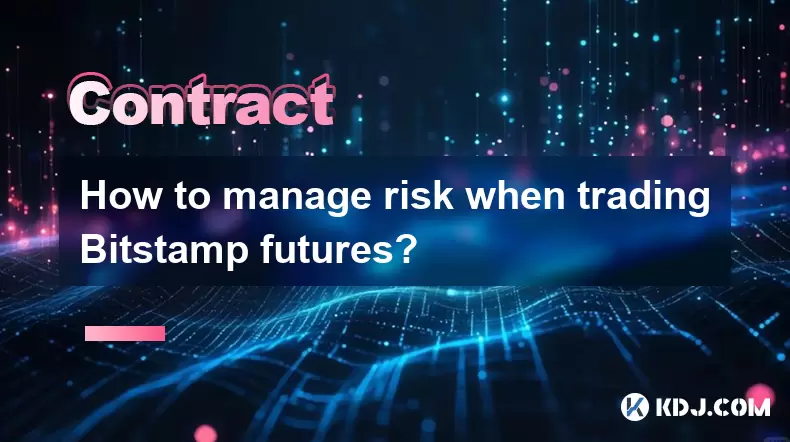-
 Bitcoin
Bitcoin $118500
0.73% -
 Ethereum
Ethereum $3678
2.80% -
 XRP
XRP $3.176
-2.52% -
 Tether USDt
Tether USDt $1.001
0.06% -
 BNB
BNB $772.0
0.24% -
 Solana
Solana $185.3
-2.48% -
 USDC
USDC $1.000
0.05% -
 Dogecoin
Dogecoin $0.2347
-3.96% -
 TRON
TRON $0.3121
0.42% -
 Cardano
Cardano $0.8086
-1.40% -
 Hyperliquid
Hyperliquid $42.13
-1.90% -
 Stellar
Stellar $0.4302
-0.53% -
 Sui
Sui $3.762
0.58% -
 Chainlink
Chainlink $18.14
0.07% -
 Bitcoin Cash
Bitcoin Cash $515.4
1.00% -
 Hedera
Hedera $0.2406
-3.45% -
 Avalanche
Avalanche $23.78
-0.52% -
 Litecoin
Litecoin $111.5
-1.76% -
 UNUS SED LEO
UNUS SED LEO $8.993
0.32% -
 Shiba Inu
Shiba Inu $0.00001362
-2.96% -
 Toncoin
Toncoin $3.149
-0.45% -
 Ethena USDe
Ethena USDe $1.001
0.02% -
 Polkadot
Polkadot $3.997
-4.42% -
 Uniswap
Uniswap $10.07
0.21% -
 Monero
Monero $323.5
0.78% -
 Bitget Token
Bitget Token $4.616
-0.73% -
 Dai
Dai $1.000
0.02% -
 Pepe
Pepe $0.00001254
-3.50% -
 Aave
Aave $286.6
-1.14% -
 Cronos
Cronos $0.1257
4.45%
Why was my Coinbase futures position auto-liquidated?
Auto-liquidation on Coinbase Futures occurs when your collateral dips below the maintenance margin, triggering an automatic position close to prevent further losses.
Jul 23, 2025 at 03:42 am

Understanding Auto-Liquidation on Coinbase Futures
Auto-liquidation occurs when your futures position no longer has enough collateral to cover potential losses, triggering an automatic closure by the exchange. On Coinbase Futures, this mechanism protects both the trader and the platform from negative equity. If your maintenance margin falls below the required threshold, the system will forcibly close your position—even if you didn’t intend to exit. This threshold is dynamic and depends on leverage, market volatility, and asset price movement.
Common Triggers for Liquidation
Several factors can lead to liquidation on Coinbase Futures:
- A sharp adverse price move in the underlying asset
- Insufficient initial margin relative to your position size
- High leverage magnifying small price changes
- Sudden spikes in funding rates affecting your equity
- Slippage during volatile market conditions where your stop-loss isn’t executed at the expected price
Each of these scenarios reduces your account equity below the maintenance margin level. For example, if you open a 10x long position in BTC and the price drops 10%, your equity could fall to zero or below, prompting immediate liquidation.
How to Check Your Liquidation Price on Coinbase
Coinbase provides real-time liquidation price indicators on the futures trading interface: - Navigate to the Positions tab in your Coinbase Futures dashboard
- Locate your active position
- Hover over or click the “i” icon next to the position
- View the liquidation price field—this is the exact price at which your position will be auto-closed
This value updates dynamically based on current market conditions and your margin balance. If the mark price (the fair price used by the exchange) reaches this level, liquidation executes instantly.
Step-by-Step: Preventing Future Liquidations
To avoid unexpected liquidations: - Monitor your leverage: Lower leverage (e.g., 2x–5x) reduces risk of rapid equity depletion
- Increase your collateral: Add more USDC or the base asset to raise your margin ratio
- Set manual stop-loss orders: These can close your position before reaching the liquidation price
- Use the margin ratio indicator: Keep it above 10% to create a buffer zone
- Avoid holding positions during high-volatility events like CPI releases or major Bitcoin news
Each of these steps gives you more control over your position’s lifespan and reduces reliance on Coinbase’s automatic systems.
What Happens During Liquidation?
When liquidation occurs: - Your position is closed at the current mark price, not the last traded price
- A liquidation fee is deducted—typically 0.5% of the position value
- Remaining collateral (if any) is returned to your wallet
- You may see a negative balance if slippage or extreme volatility causes the closure at a worse price than expected
Coinbase uses a partial or full liquidation engine depending on how far your equity has fallen. In extreme cases, cross-margin positions may impact other open trades if they share the same collateral pool.
How to Adjust Your Risk Settings on Coinbase
You can customize your risk exposure directly in the futures interface: - Go to Settings > Futures Risk Parameters
- Select between Isolated Margin (risk limited to that position) or Cross Margin (uses all available balance)
- Enable Auto-Deleveraging Protection to reduce forced closures during system stress
- Set alerts for when your margin ratio drops below 20%
- Review and adjust your leverage per trade rather than using a default setting
These settings must be reviewed before each trade. A position opened with 20x leverage on a volatile altcoin requires different parameters than a 2x BTC position.
Frequently Asked Questions
Can I recover funds after a liquidation?
No, once a position is liquidated, the remaining collateral—after fees—is what’s returned. If the liquidation price was hit due to extreme slippage, you may receive less than expected. There is no appeals process for auto-liquidations.Why did my position liquidate even though the market price didn’t reach my stop-loss?
Stop-loss orders are separate from liquidation mechanics. Liquidation uses the mark price, which may differ from the spot or last traded price due to funding rate adjustments or exchange-specific pricing models.Does Coinbase warn me before liquidation?
Yes, Coinbase sends real-time alerts via email and in-app notifications when your margin ratio drops below 20%. These warnings are critical—you should act immediately by adding margin or reducing position size.Can I hold a position past the liquidation price if I add more margin?
Yes, if done before the mark price reaches the liquidation level. Adding margin increases your equity and recalculates the liquidation price. This must be done manually—there is no auto-top-up feature.
Disclaimer:info@kdj.com
The information provided is not trading advice. kdj.com does not assume any responsibility for any investments made based on the information provided in this article. Cryptocurrencies are highly volatile and it is highly recommended that you invest with caution after thorough research!
If you believe that the content used on this website infringes your copyright, please contact us immediately (info@kdj.com) and we will delete it promptly.
- G Coin: Transactions Powering Global Adoption in Web3
- 2025-07-24 23:10:13
- Sleep Token, Turnstile, and the Rock Resurgence: Genre-Bending and Masked Mystique
- 2025-07-24 23:10:13
- DeepSeek AI's Crypto Predictions: Navigating Altcoin Season with XRP, DOGE, and ADA
- 2025-07-24 23:30:12
- Sui, DeFi, and Scalability: A New York Minute on Crypto's Fast Lane
- 2025-07-24 23:30:12
- Bitcoin, XYZVerse, and Price Surges: What's the Deal?
- 2025-07-24 23:35:12
- Persona 5 Coin Locations & Puzzle Solutions: Steal the Treasure!
- 2025-07-24 23:35:12
Related knowledge

Why is my Bitstamp futures position being liquidated?
Jul 23,2025 at 11:08am
Understanding Futures Liquidation on BitstampFutures trading on Bitstamp involves borrowing funds to open leveraged positions, which amplifies both po...

Does Bitstamp offer inverse contracts?
Jul 23,2025 at 01:28pm
Understanding Inverse Contracts in Cryptocurrency TradingIn the realm of cryptocurrency derivatives, inverse contracts are a specific type of futures ...

How to find your Bitstamp futures trade history?
Jul 23,2025 at 08:07am
Understanding Bitstamp and Futures Trading AvailabilityAs of the current state of Bitstamp’s service offerings, it is critical to clarify that Bitstam...

Can I use a trailing stop on Bitstamp futures?
Jul 23,2025 at 01:42pm
Understanding Trailing Stops in Cryptocurrency TradingA trailing stop is a dynamic type of stop-loss order that adjusts automatically as the price of ...

What are the trading hours for Bitstamp contracts?
Jul 24,2025 at 11:56am
Understanding Bitstamp and Contract Trading AvailabilityBitstamp is one of the longest-standing cryptocurrency exchanges, established in 2011 and head...

How to manage risk when trading Bitstamp futures?
Jul 24,2025 at 12:29pm
Understanding Bitstamp Futures and Their Risk ProfileTrading Bitstamp futures involves entering into contracts to buy or sell a specified amount of cr...

Why is my Bitstamp futures position being liquidated?
Jul 23,2025 at 11:08am
Understanding Futures Liquidation on BitstampFutures trading on Bitstamp involves borrowing funds to open leveraged positions, which amplifies both po...

Does Bitstamp offer inverse contracts?
Jul 23,2025 at 01:28pm
Understanding Inverse Contracts in Cryptocurrency TradingIn the realm of cryptocurrency derivatives, inverse contracts are a specific type of futures ...

How to find your Bitstamp futures trade history?
Jul 23,2025 at 08:07am
Understanding Bitstamp and Futures Trading AvailabilityAs of the current state of Bitstamp’s service offerings, it is critical to clarify that Bitstam...

Can I use a trailing stop on Bitstamp futures?
Jul 23,2025 at 01:42pm
Understanding Trailing Stops in Cryptocurrency TradingA trailing stop is a dynamic type of stop-loss order that adjusts automatically as the price of ...

What are the trading hours for Bitstamp contracts?
Jul 24,2025 at 11:56am
Understanding Bitstamp and Contract Trading AvailabilityBitstamp is one of the longest-standing cryptocurrency exchanges, established in 2011 and head...

How to manage risk when trading Bitstamp futures?
Jul 24,2025 at 12:29pm
Understanding Bitstamp Futures and Their Risk ProfileTrading Bitstamp futures involves entering into contracts to buy or sell a specified amount of cr...
See all articles

























































































